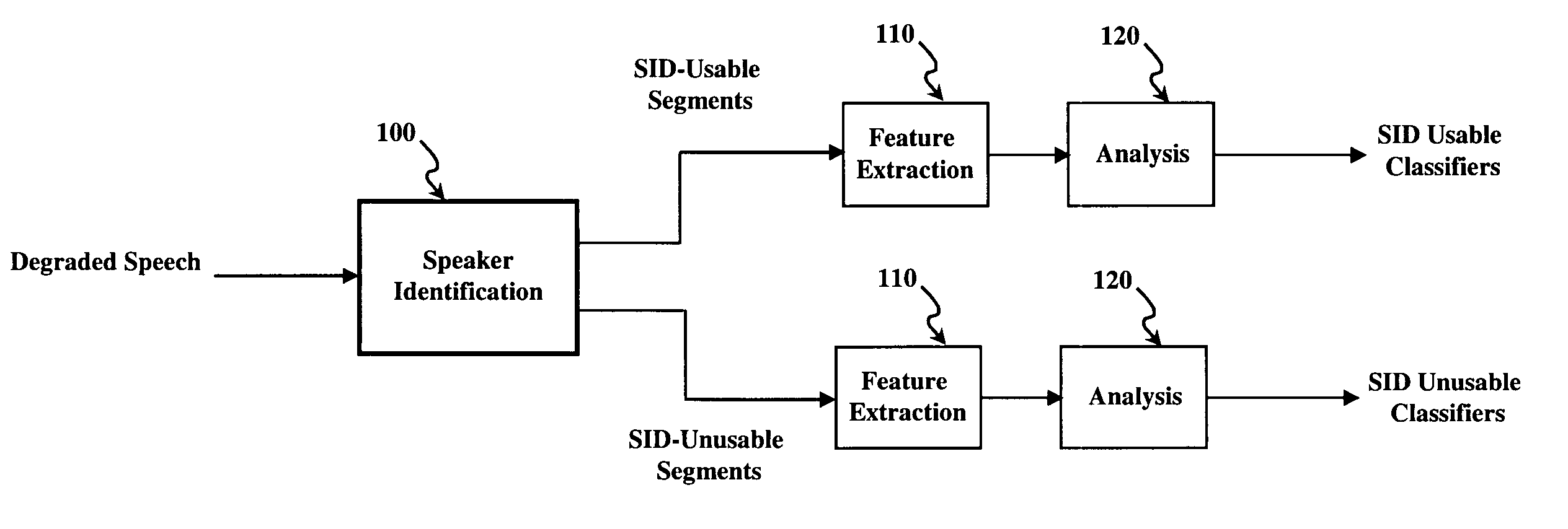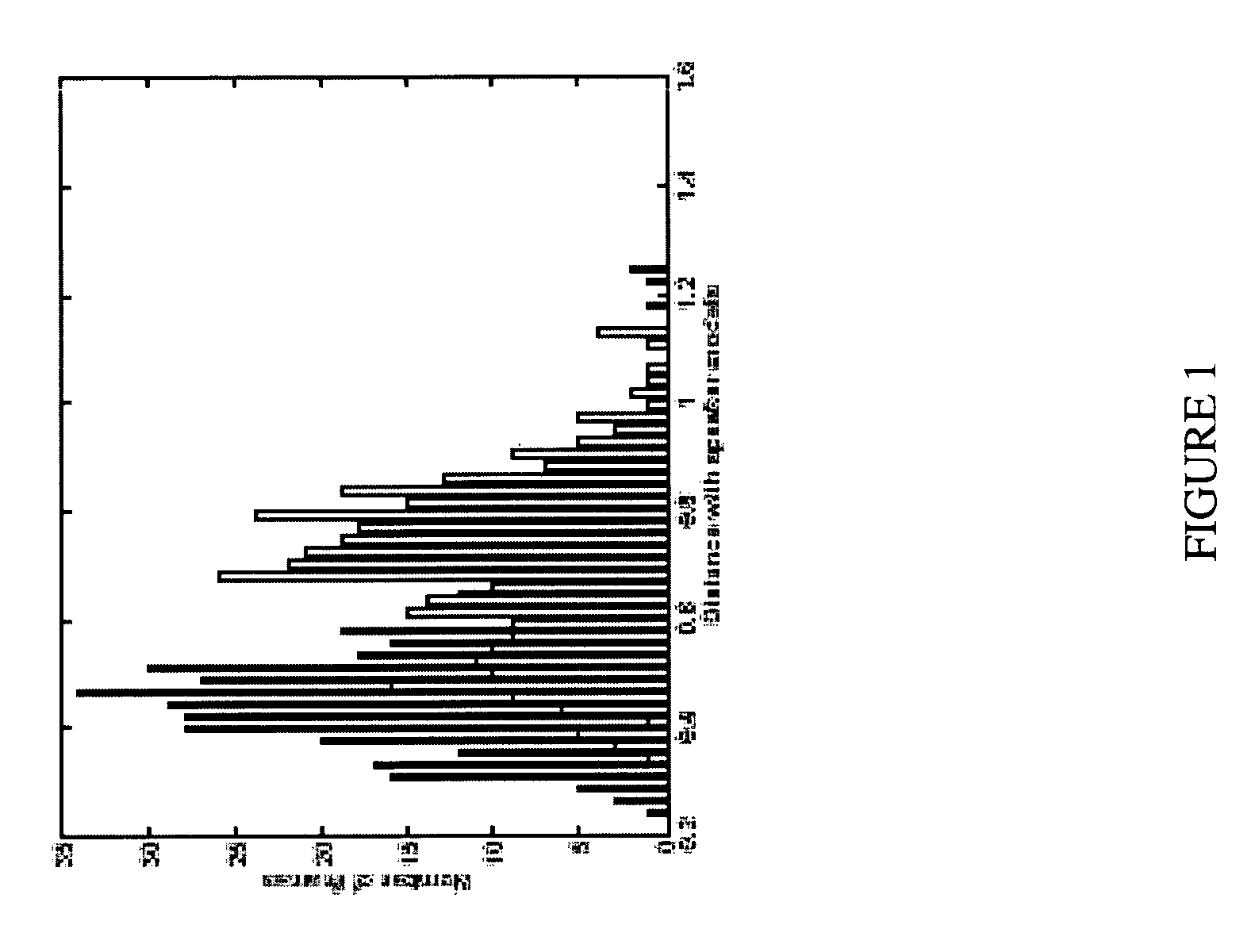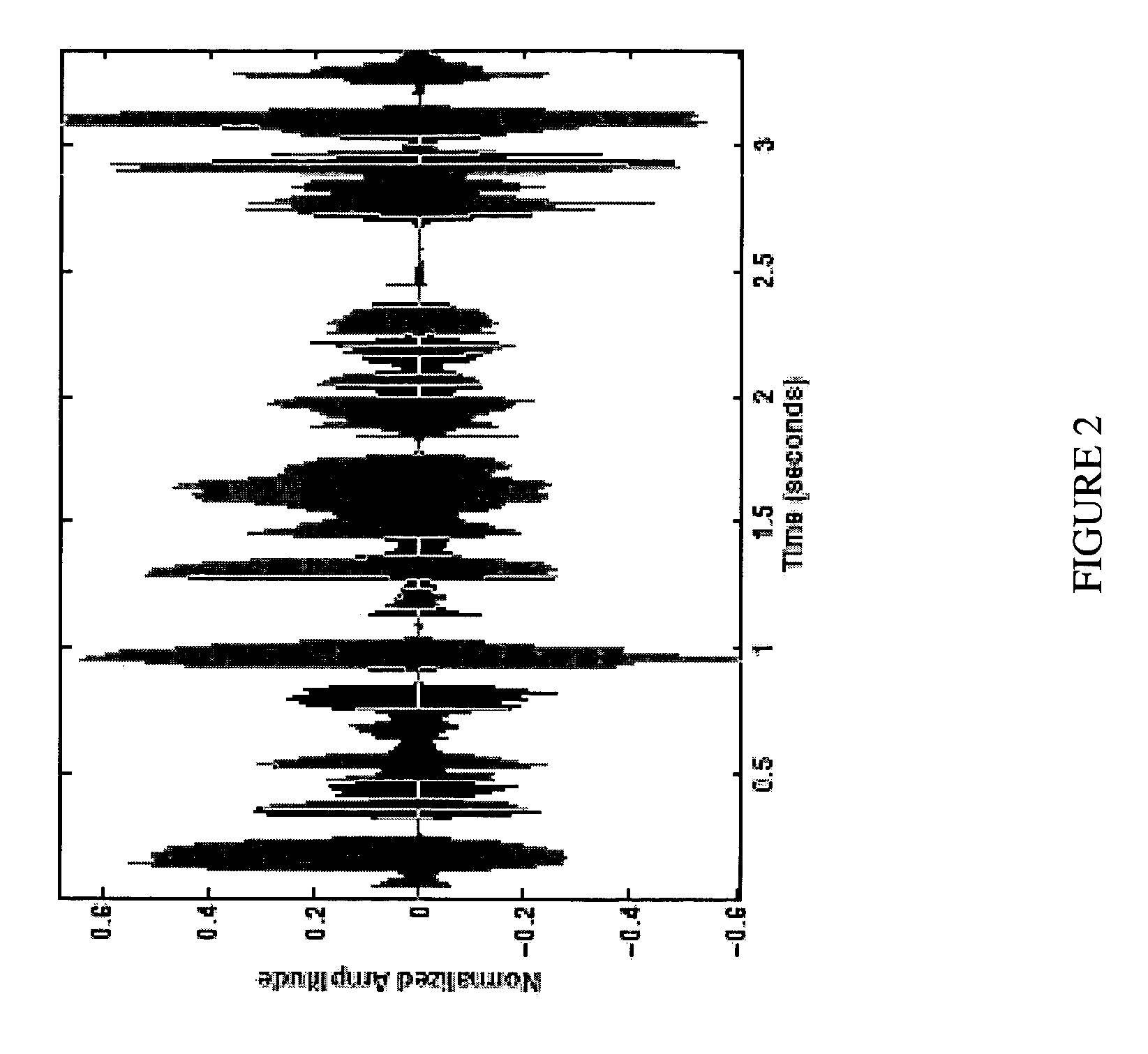Method for improving speaker identification by determining usable speech
a technology of usable speech and speaker identification, applied in the field of detection of usable speech, can solve the problems of prior-art approaches to speaker separation, lack of decision-making methods and algorithms, and the loss of performance, efficiency, accuracy,
- Summary
- Abstract
- Description
- Claims
- Application Information
AI Technical Summary
Benefits of technology
Problems solved by technology
Method used
Image
Examples
Embodiment Construction
[0048]The present invention uses a vector quantization classifier to build the feature space and to perform speaker classification [10]. The LPC-Cepstrum is used as features with the Euclidean distance between test utterances and the trained speaker models as the distance measure. A vector quantizer maps k-dimensional vectors in the vector space Rk into a finite set of vectors Y={yi: i=1, 2, . . . , N}. Each vector yi is called a codeword and the set of all the codewords is called a codebook. In this system the 14th order LPC-Cepstral feature space is clustered into 128 centroids during the training stage which is referred as the codebook.
Study of Distances from Speaker Models
[0049]Referring to FIG. 1, consider the testing stage in which the test utterance is divided into ‘n’ frames and the Euclidean distance of the features of ‘n’ frames with ‘m’ trained speaker models is determined. For each speaker model, the minimum distance obtained from the codewords is cons...
PUM
 Login to View More
Login to View More Abstract
Description
Claims
Application Information
 Login to View More
Login to View More - R&D
- Intellectual Property
- Life Sciences
- Materials
- Tech Scout
- Unparalleled Data Quality
- Higher Quality Content
- 60% Fewer Hallucinations
Browse by: Latest US Patents, China's latest patents, Technical Efficacy Thesaurus, Application Domain, Technology Topic, Popular Technical Reports.
© 2025 PatSnap. All rights reserved.Legal|Privacy policy|Modern Slavery Act Transparency Statement|Sitemap|About US| Contact US: help@patsnap.com



